

It is usually used for mashing slices of banana tree trunks with leftover food to make slops for feeding pigs. This mortar was made by carving out a hole in a tree trunk:
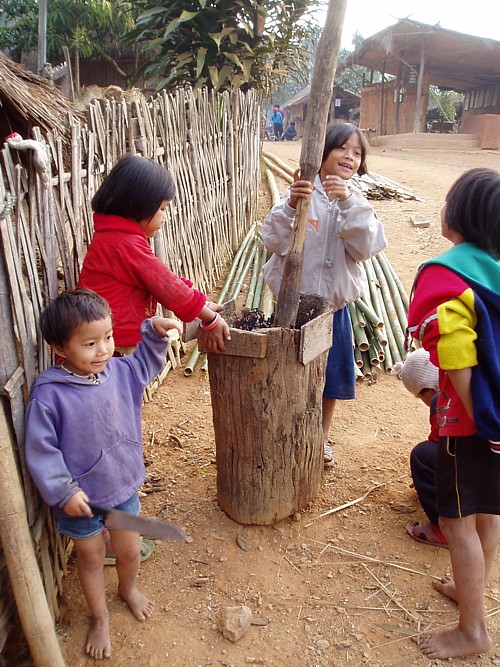
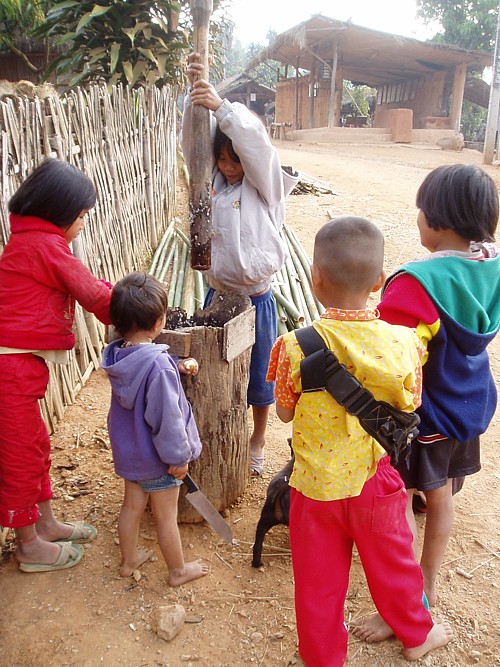
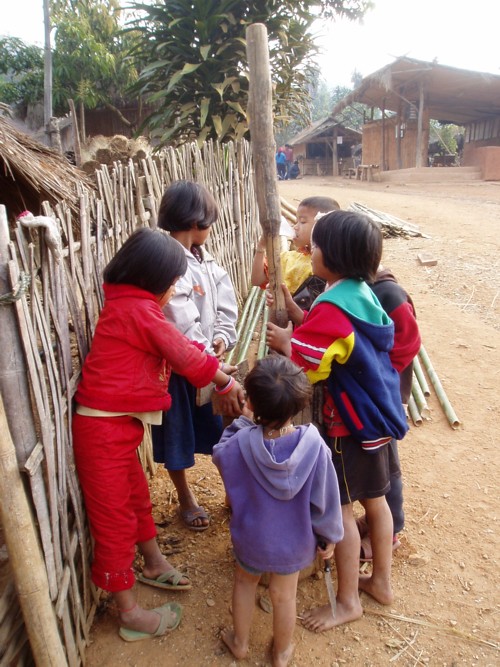
More 'modern' versions of the mortar are made by covering the inside of a plastic bucket with a thick layer of cement. Here are the cat's hosts using one such plastic bucket mortar on the 1st day of the 4-day long Akha New Year back in December 2004:

They are pounding cooked sticky rice (hor/haw) to make the sticky rice 'cake' called 'hor theung' (not sure how best to romanise the second syllable). After rolling it in the winnowing tray containing ground black sesame it is ready to eat. Some is also pinched off into smaller balls & used as offerings to ancestors.
While the cat was taking the above photo, NK was in the other half of the village taking photos of his own host family doing the same thing. After filling the 'tree trunk mortar' with freshly steamed rice (left) the son-in-law gets down to the hard work (right):
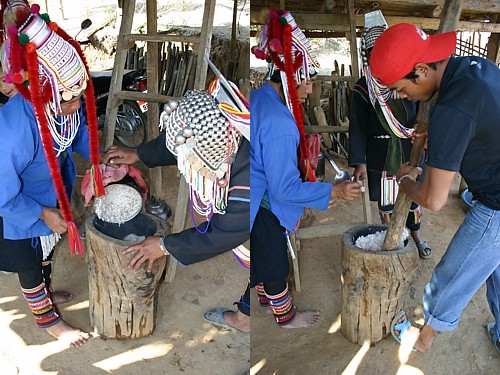
Photos by NK
(In other photos by NK, the father-in-law is busy lounging on the balcony above :P)
They have an elegant way of removing the sticky product from the mortar & pestle:
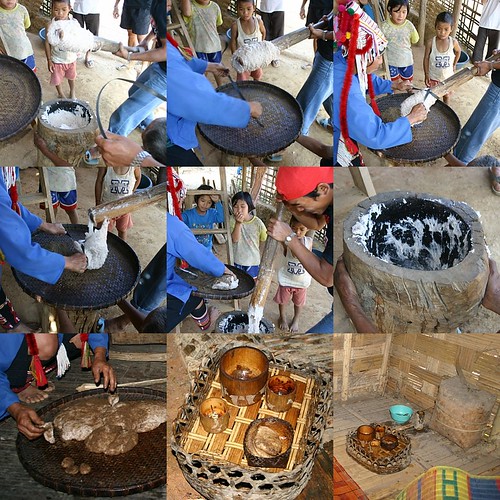
Photos by NK
[L-R, top to bottom]
1. twirl the pestle around in the mortar for the pounded rice to stick to it
2. wrap a strip of plastic/string tightly around the the pestle
3. pull it towards you
4. entire clump of pounded sticky rice comes off cleanly
5. roll the clump in the ground black sesame
6. repeat until the mortar is almost clean
7. small balls pinched off
8. placed in container at bottom left
9. offered to ancestors
Fast-forward to December 2010 - remnants of a piece of 'hor theung' (upper left) that has been savaged by the paws of two hungry cats:
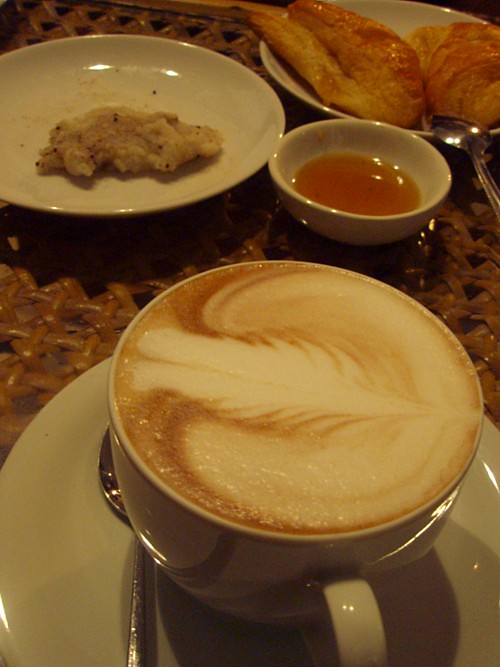
Here it was eaten by dipping in honey. It is not found on the menu at Akha Ama Coffee cafe - the owner just happened to return with some from Akha New Year celebrations in his own village.

No comments:
Post a Comment